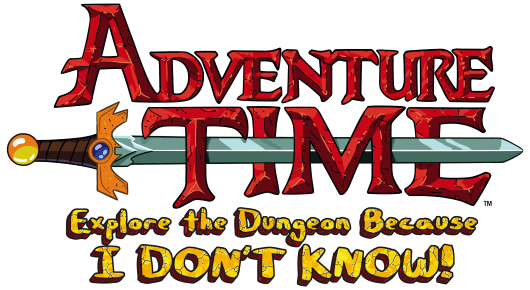While exploring dungeons because REASONS is popular in the cartoon Adventure Time you will probably need your plots and adventures to be coherent. Like the Tom Clancy quote, “The difference between reality and fiction? Fiction has to make sense,” you need to give your players enough plausibility for them to suspend their disbelief. The suspension of disbelief might seem moot when pretending to fly space cruisers and cast high level magic spells, but it’s not. The game world still needs to feel like its grounded in a reality, even if it’s not this reality.
If you’re like me you want quests and adventures that play more like Mine of Phandelver and less like nearly all the straightforward adventures (especially the LFR modules) for D&D 4e. A problem that reinforced the negative views of 4e as a game of straightforward combat grinds. There’s no excuse for such thoughtless and poor design by a premier games publisher.
So how can we make some better quests and adventures for our players and thereby improve our games? First let’s look at this list of 12 quest types I pulled from Extra Curricular (the fan forum of the Youtube channel Extra Credits).
- Kill Quests: Slay a certain type and number of enemies.
- Fetch Quests: Obtain an item and return with it.
- FedEx Quests: Deliver an item to somewhere else.
- Collect Quests: Obtain a certain amount of some item.
- Escort Quests: Accompany an NPC as they venture across the map.
- Exploration Quests: Search an unexplored area, such as a dungeon or forest, for treasure and/or new enemy types.
- Siege Quests: Infiltrate an enemy base and defeat either all enemies or just one boss.
- Defense Quests: Defend an important area, precious item, or strategic base from enemy onslaught.
- Diplomatic Quests: Improve or Harm relations between individual NPCs, factions, or nations through only (or at least primarily) dialogue or other non-combat means.
- Recruitment Quests: Obtain potential allies, NPC or PC, to help in future campaigns and quests.
- Sabotage Quests: Undermine the workings of an enemy unit, base, or artifact through stealth, cunning, or clever application of magic.
- Theft Quests: Steal items of value from the enemy, unsuspecting individuals, or from various locales.
If for some reason you don’t watch Extra Credits videos, you should start right now. There is no better introduction for pen and paper GMs to Extra Credits’ insights on game development (video games) than their two part look at RPG quest design. https://www.youtube.com/watch?
Now Extra Credits focused specifically on MMO RPG quests. I hope you’re not sending your players off to kill a nice round number of x-type monsters. But it is a very simple place for us to start the discussion. After some research I found five really basic MMO quest types kept coming up:
- Kill Quests
- Escort/Delivery Quests
- Discovery Quests
- Fetch Quests
- Escape Quests
Actually we can winnow this list better. First off an escape quest is just a delivery quest with the PCs as the package. You could also set it up as discovery quest if the escape route/exit isn’t simple to identify, like Homer’s Odyssey.
We can also tick off fetch quests, it’s just a delivery quest with a different location to pick up the package. You also may need to discover the package’s location, or kill someone to take it.
There are also inverse quests, or “Stop X” quests. Need to protect a static location or person? That’s a Stop Kill Quest.
I also wanted to add Make Quests. Those quests about building, crafting, or summoning something, NOT delivering components for an NPC to make something (delivery). I mean the inverse is an tabletop trope, how many times have you needed to stop the BBEG from completing a big ritual?
So our revised list looks something like this:
- Kill/Stop Kill
- Delivery/Stop Delivery
- Discovery/Stop Discovery
- Make/Stop Make
That’s right as PCs, we’re always killing, moving, finding, or making something. Just remember to be liberal in your application. Kill doesn’t always mean a person or monster, it could be an idea, or an item. Same thing with Stop X inverses, Stop Kill doesn’t necessarily need to be achieved by killing. In fact, it’s a lot more interesting when it’s not. With that in mind we can apply this lean mean list of basic quest types to the initial list of twelve.
- Kill = Kill
- Fetch = Delivery with potential additions of Kill and Discovery
- Fedex = Delivery
- Collect = Delivery for someone else. An intrinsic collect quest has no valid parallel in tabletop
- Escort = Delivery
- Exploration = Discovery
- Siege = Kill
- Defense = Kill… to Stop Kill
- Diplomatic = Make/Stop Make, but could be any depending on the situation
- Recruitment = Discover/Make often by way of Stop Kill (save NPC from death)
- Sabotage = Stop Make or Kill
- Theft = Delivery
Pretty easy, right? Like a Fetch Quest you should routinely chain these basic quest types together to make larger and more dynamic adventures by linking the individual objectives. Earlier I mentioned stopping the BBEG from completing a ritual, let’s break that down to make the adventure more dynamic.
Discover: The party needs to find out where the evil cultists’ base is located
Stop Make: Stop the evil ritual from completion
Kill: The party needs to desecrate the site to make sure no cultists resume the ritual
Stop Kill: The party needs to protect the site while one character desecrates it
Kill: The party needs to do clean up duty on the remaining cultists.
Keep these simple quest types in mind when planning your next adventure. Keep an eye out as I expand on this premise in the next blog.

